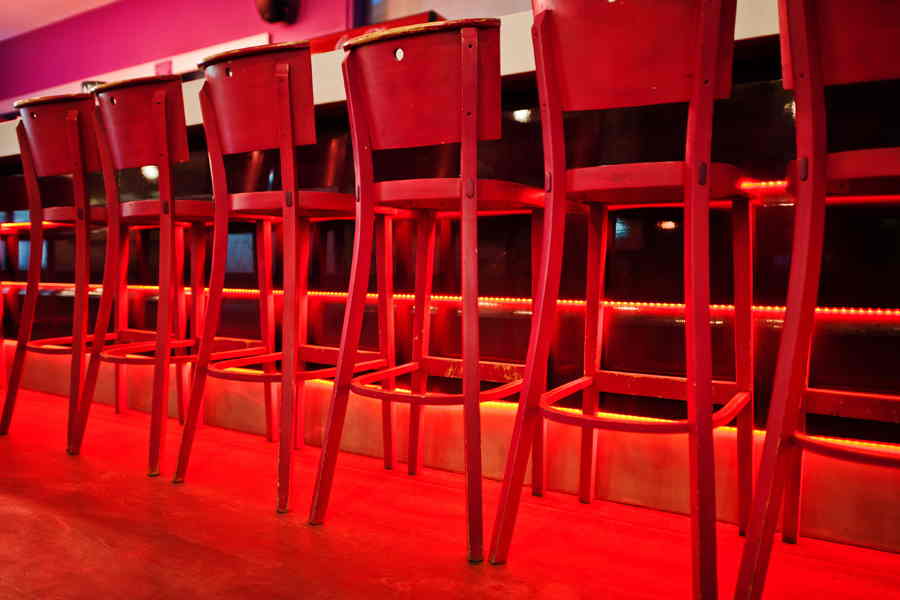What is binge drinking?
Binge drinking is a popular form of excessive alcohol use, which the National Institute on Alcohol Abuse and Alcoholism defines as “a pattern of drinking that brings a person’s blood alcohol concentration (BAC) to 0.08 grams percent or above.”
For a typical American adult male, this translates to drinking 5+ servings of alcohol in two hours. For a typical American adult female, this translates to drinking 4+ servings of alcohol in two hours.
A serving of alcohol is any drink that contains 0.6 fl oz of pure alcohol. The following portions count as a single serving size:
- 12 fl oz of beer (an average can size)
- 8-9 fl oz of malt liquor
- 5 fl oz of wine
- 3-4 fl oz of fortified wine (ex. sherry, port)
- 2-3 fl oz of cordial, liqueur, or aperitif
- 1.5 fl oz of brandy or cognac
- 1.5 fl oz of an 80 proof distilled spirit (ex. a shot of liquor)
Which population binge drinks the most?
According to the CDC, one in six adults in the United States binge drink. On average, these individuals are binging four times a month and consuming eight drinks per binge.
Most people who binge drink are adults aged 18-34 years. Binge drinkers aged 65+ years are less common, though the ones who do drink to excess report binging with a higher frequency than the younger population, on average five or six times every month.
Perhaps surprisingly, most binge drinkers are not alcohol dependent. Also surprisingly, most binge drinking episodes occur outside of the college-aged population; 70% of binge drinking episodes involve adults 26 years of age or older.
Binge drinking is twice as prevalent in men as it is in women, and is more common in households with incomes over $75,000 than it is in houses of lower income.
More than half of all alcoholic beverages consumed by US adults are taken in binge form, a statistic that jumps to almost 90% for US youth under age 21.
Why do people binge drink?
Much of the motivation behind normal alcohol-consumption applies to binge drinking as well; people drink to relieve stress, to “loosen up,” to fit in at social gatherings, etc.
Researchers at the University of North Carolina at Chapel Hill have recently gone on to suggest a neurological basis for binge drinking that involves the extended amygdala and the ventral tegmental area. These areas of the brain are limbic system structures, meaning that they are involved with regulating emotions and motivations. The extended amygdala is particularly responsible for responding to stress, while the ventral tegmental area is particularly involved in rewarding behavior. A newly identified circuit connects these two areas: alcohol, a physiological stressor, activates the amygdala, which then communicates with the ventral tegmental area via long projection neurons. The ventral tegmental area receives the message from the amygdala and responds by promoting and rewarding alcohol consumption.
Consequently, binge drinking is rewarded even though alcohol is a harmful substance.

Is binge drinking dangerous?
Absolutely. Binge drinking can lead to a wide array of health issues, including alcohol poisoning, sexually transmitted diseases, high blood pressure, stroke, cardiovascular disease, liver disease, neurological damage, diabetes, and more.
Binge drinkers tend to have impaired judgment and abilities, which oftentimes lead to injury, unintended pregnancy, crime, etc.
Drunk driving is reported 14 times more often in binge drinkers than in non-binge drinkers. All alcohol-related issues (productivity loss, health care, crime, etc.) cost the United States $249 billion in 2010. Binge drinking caused 77% of this financial burden, a staggering $191 billion.
Are there any prevention or treatment methods available for binge drinking?
The CDC recommends evidence-based interventions to prevent binge drinking and related issues. On a macro level, they recommend increasing alcohol costs and excise taxes and putting the government in control of alcohol sales to avoid privatization. They also suggest limiting the number of alcohol venders per area, limiting the hours of alcohol sales, and holding each vendor personally responsible for any harm caused to underage or intoxicated patrons of their shop.
Education, screening, and counseling for alcohol abuse are strongly recommended at the primary care level; the sooner the problem is identified, the sooner it can be rectified. In addition, the circuitry identified between the amygdala and ventral tegmental area may offer a potential pharmacological target in the future.
If you (or a loved one) are struggling with binge drinking, please call us today at 504-510-2331. We would be happy to discuss treatment options with you!
Sources Cited:
http://www.sciencedirect.com/science/article/pii/S0006322316300063
http://uncnews.unc.edu/2016/04/26/researchers-find-brain-circuit-controls-binge-drinking/
